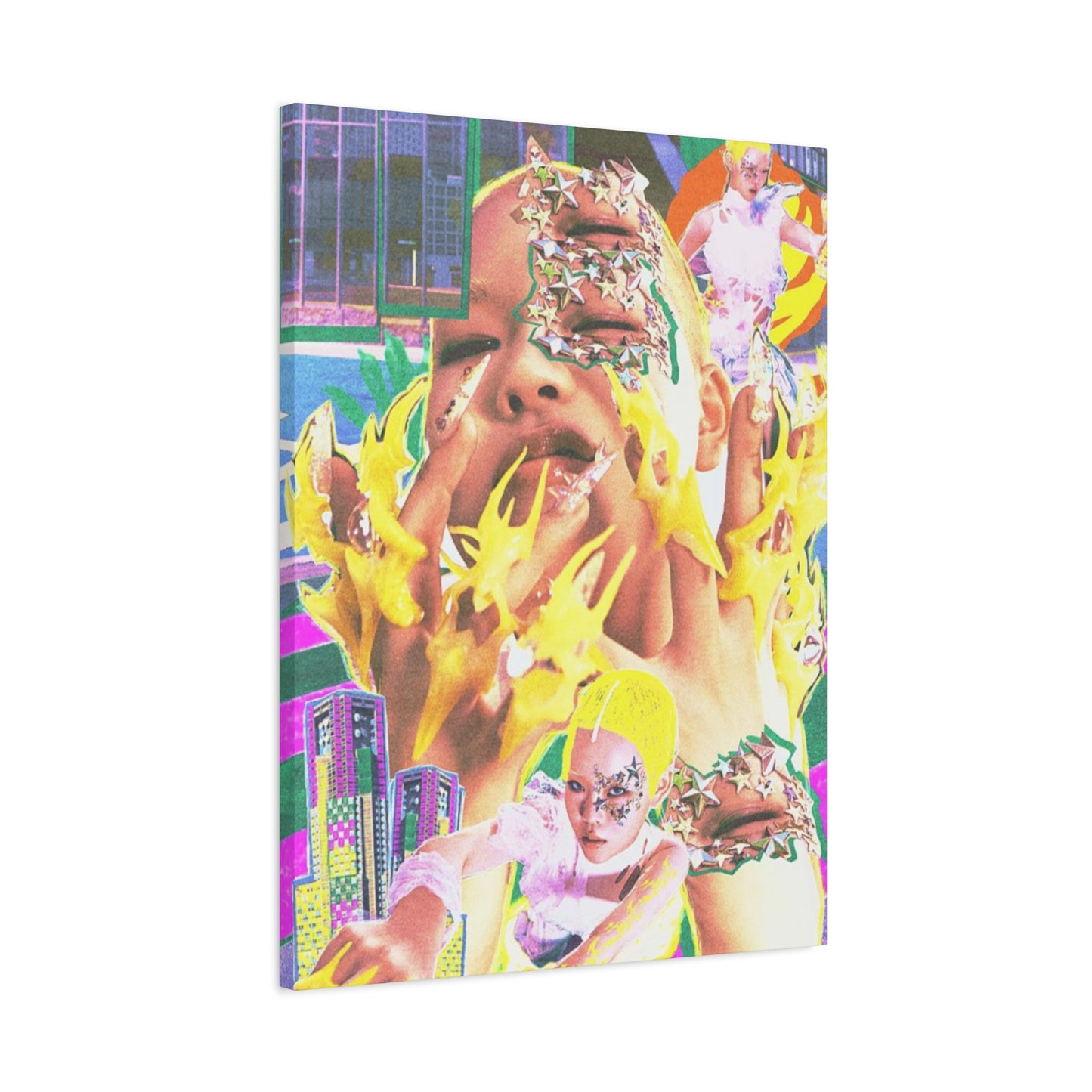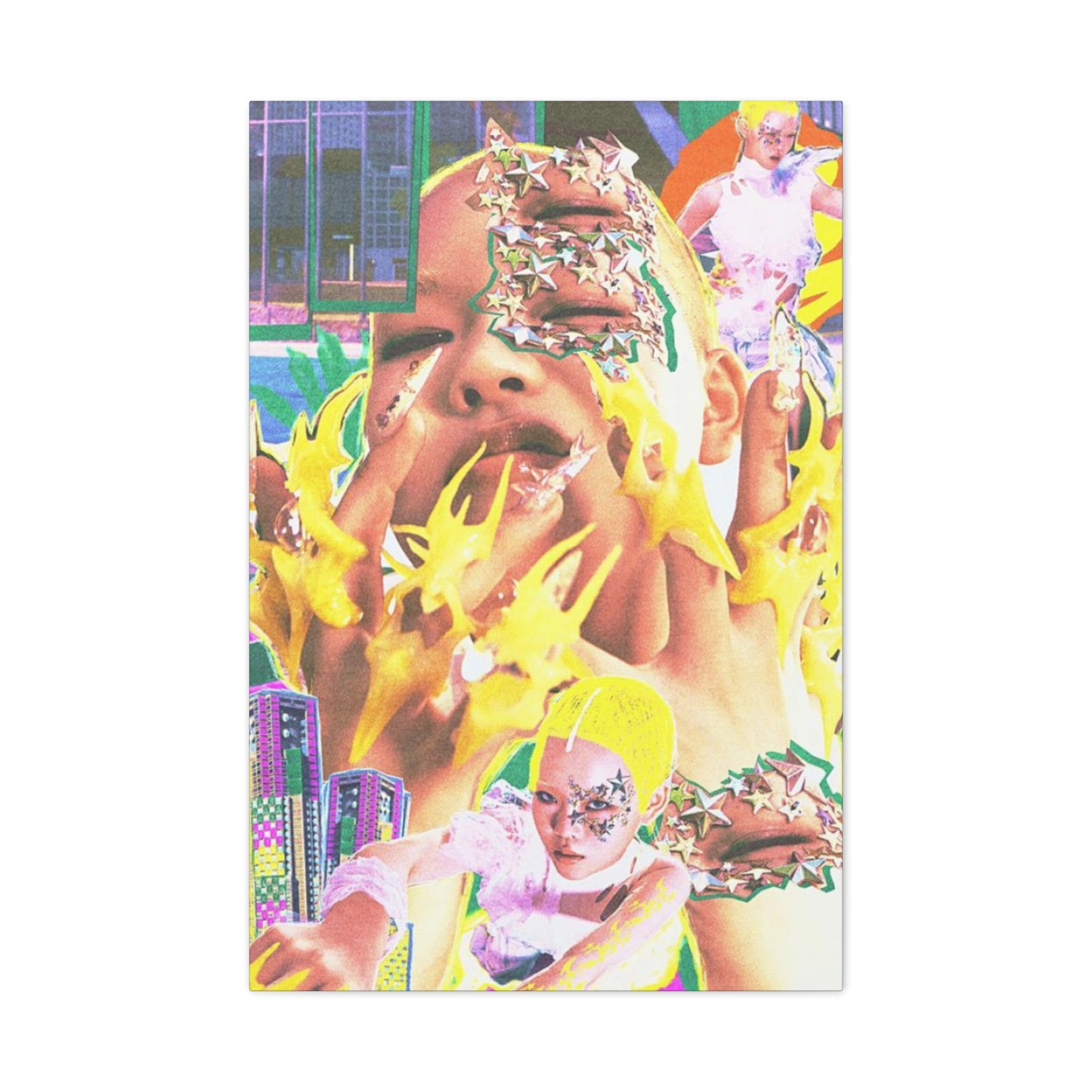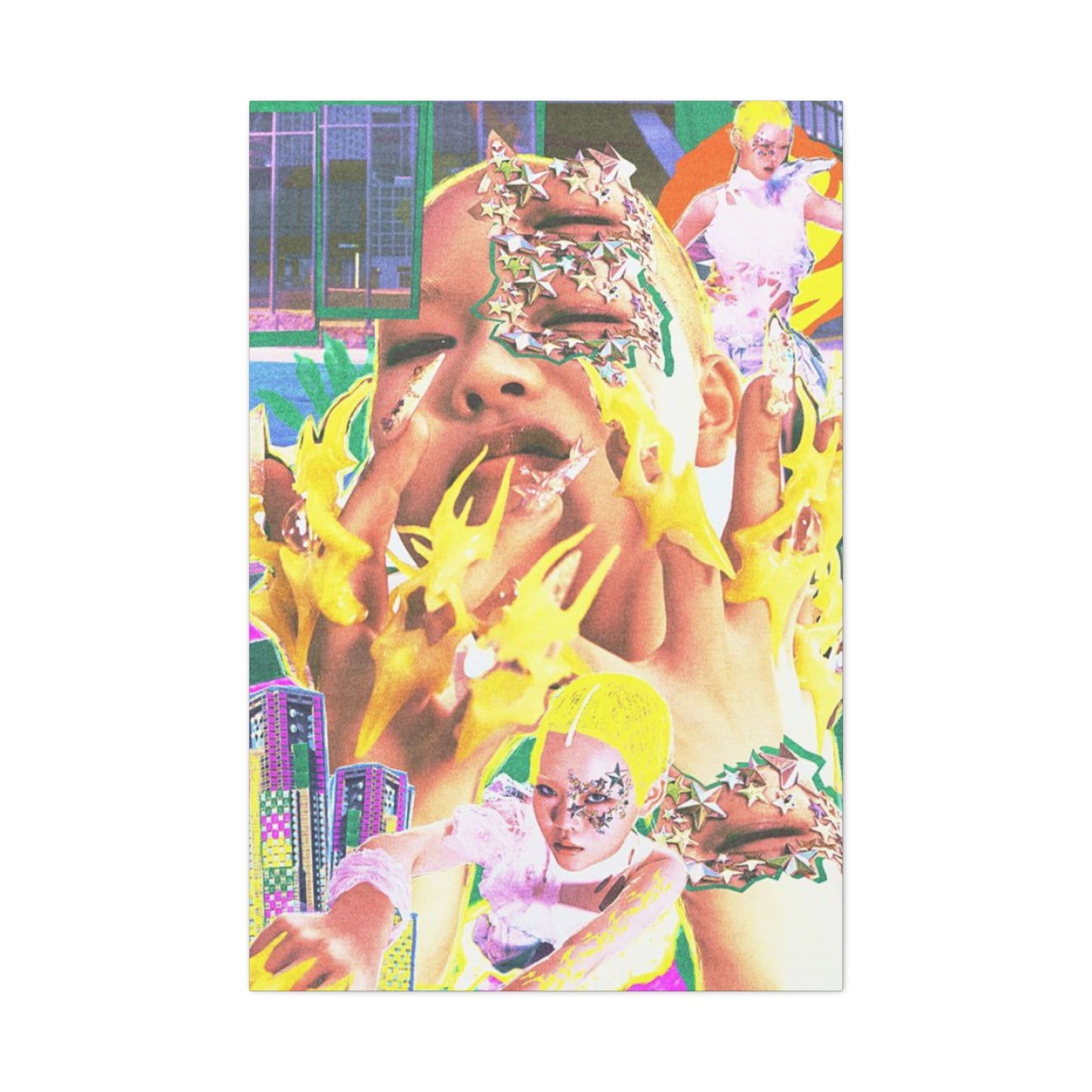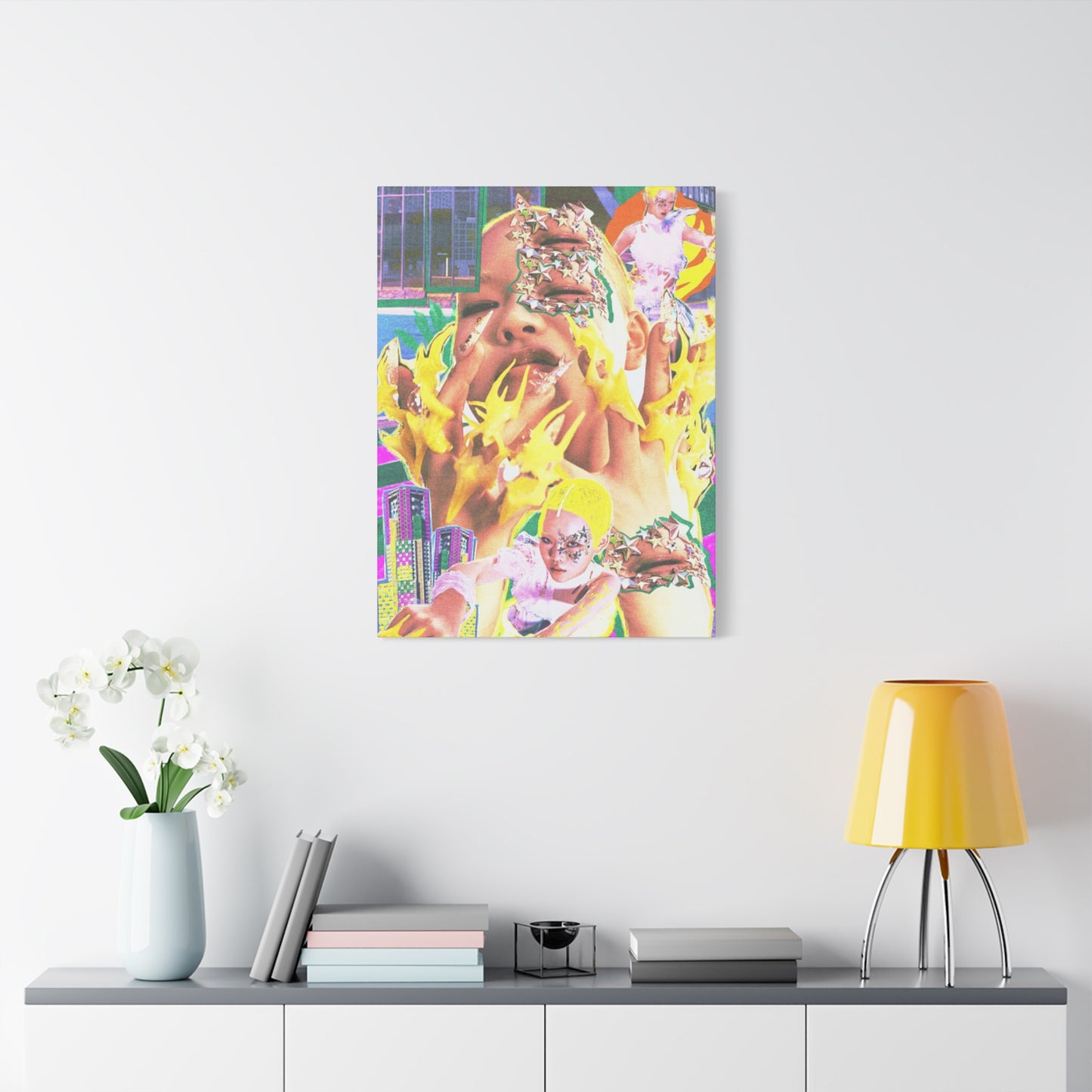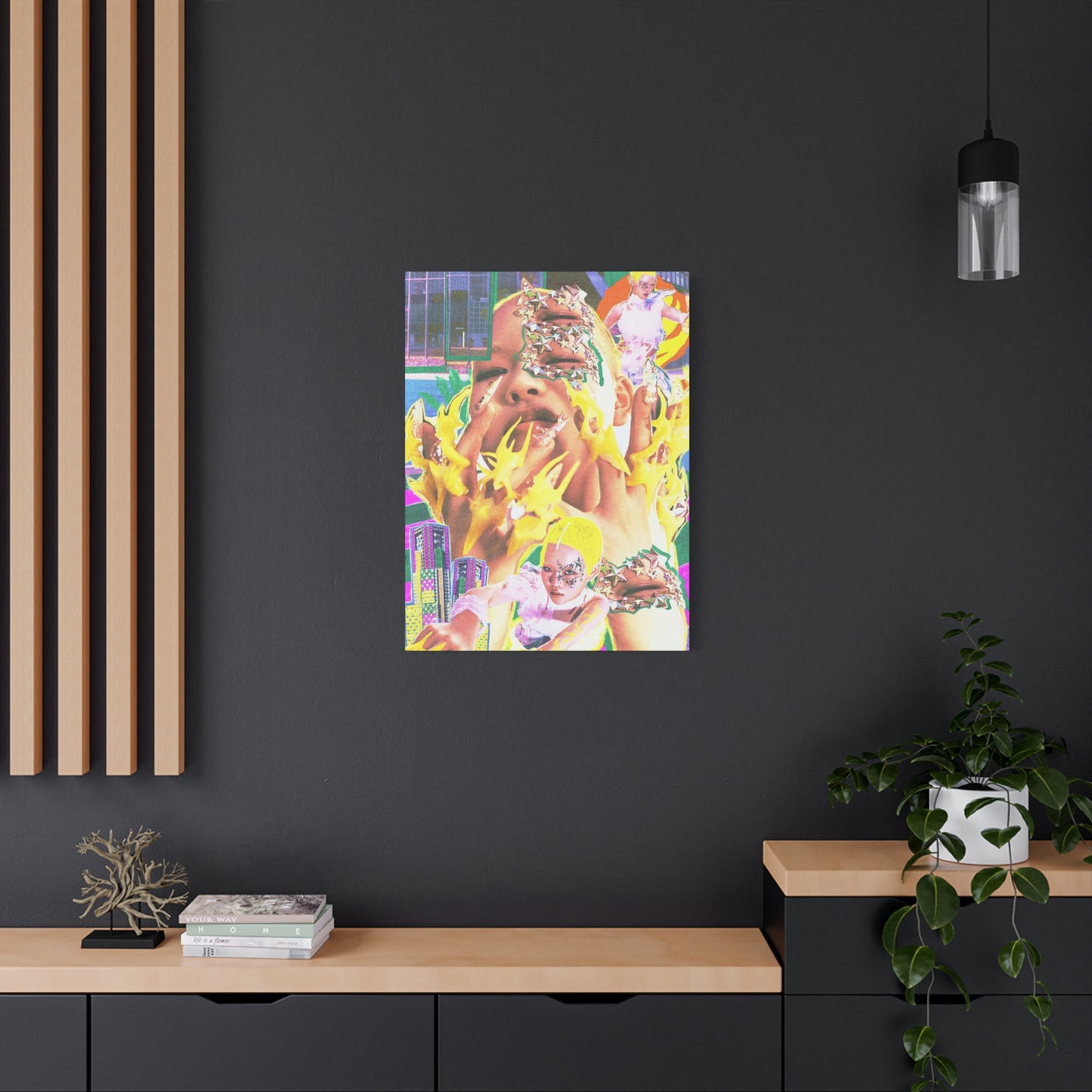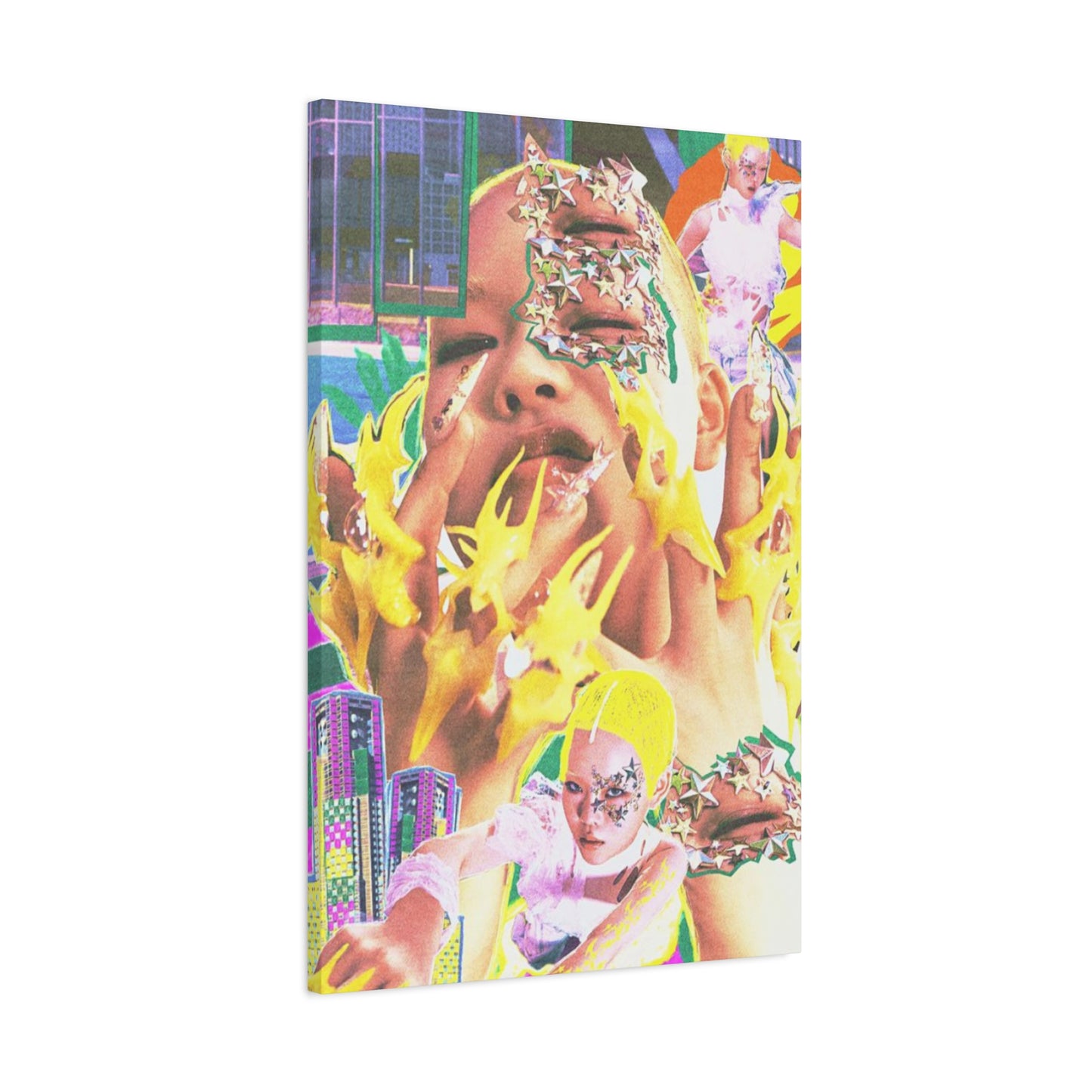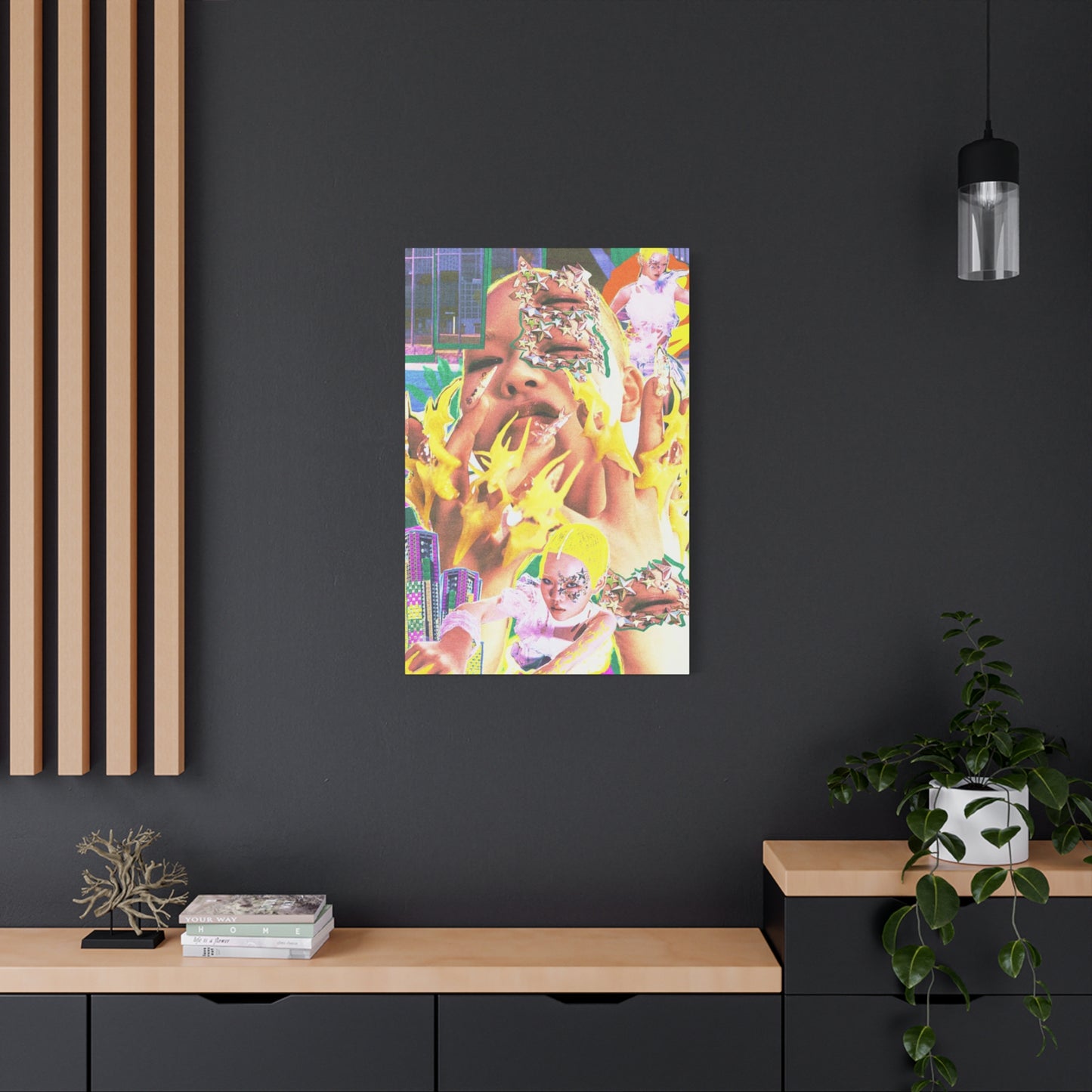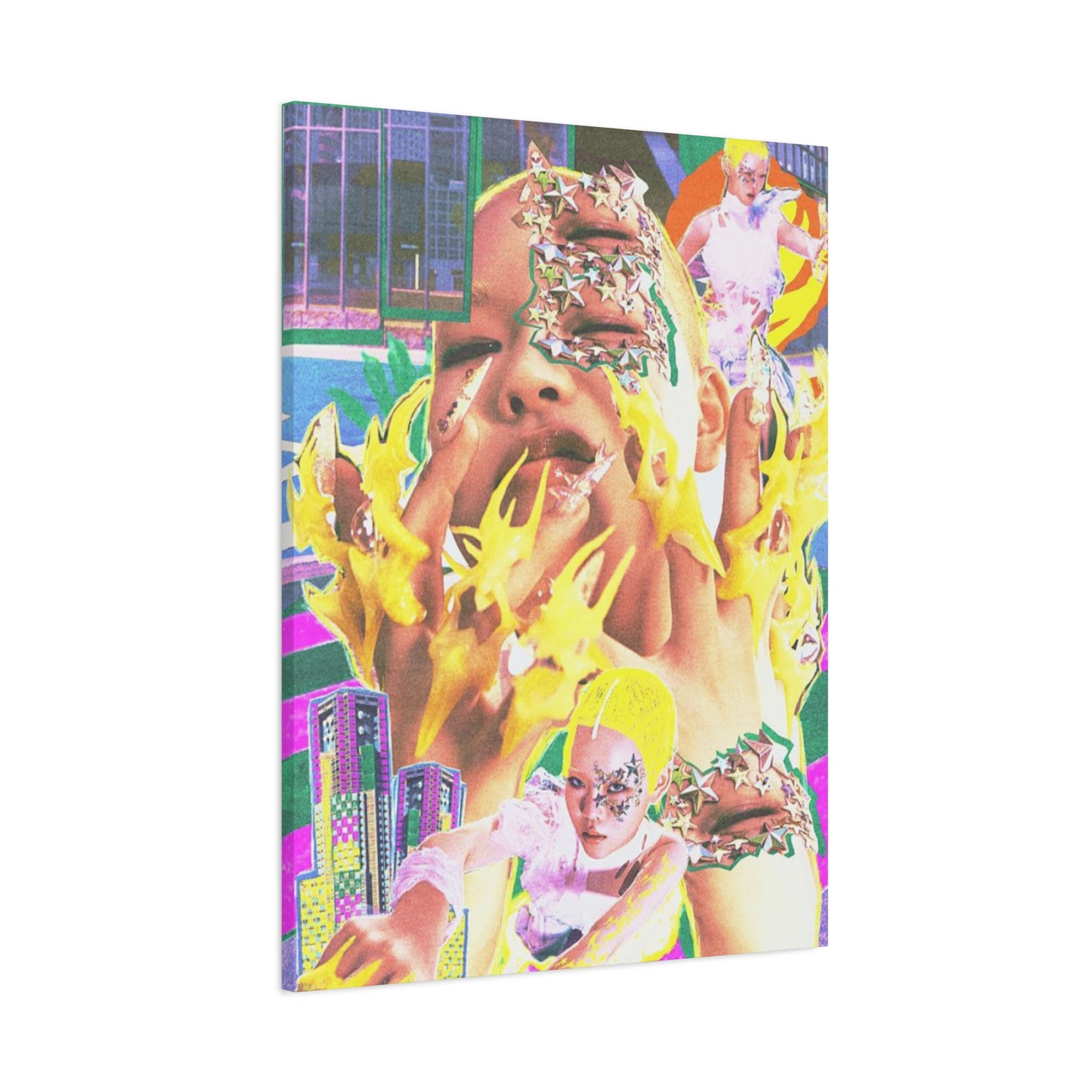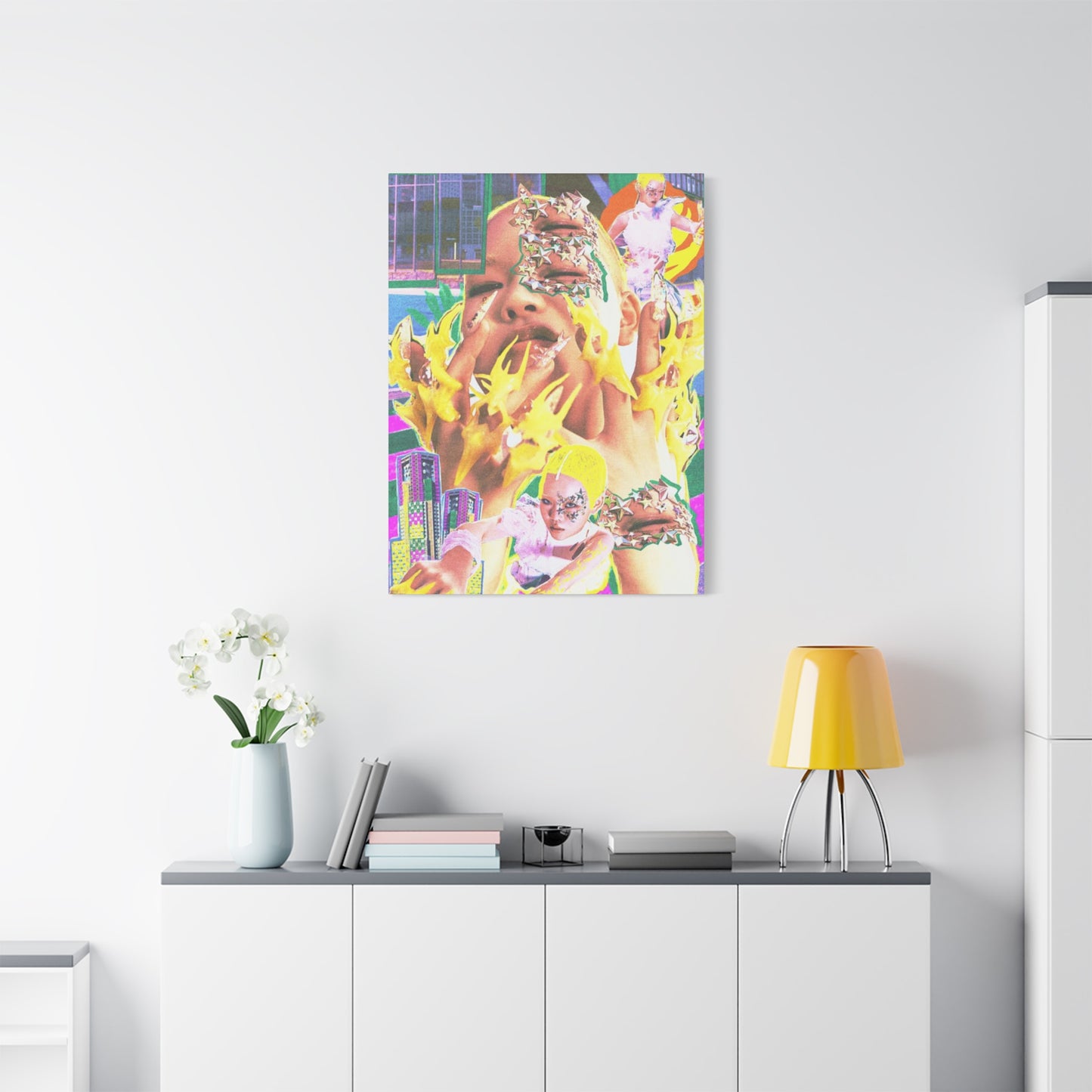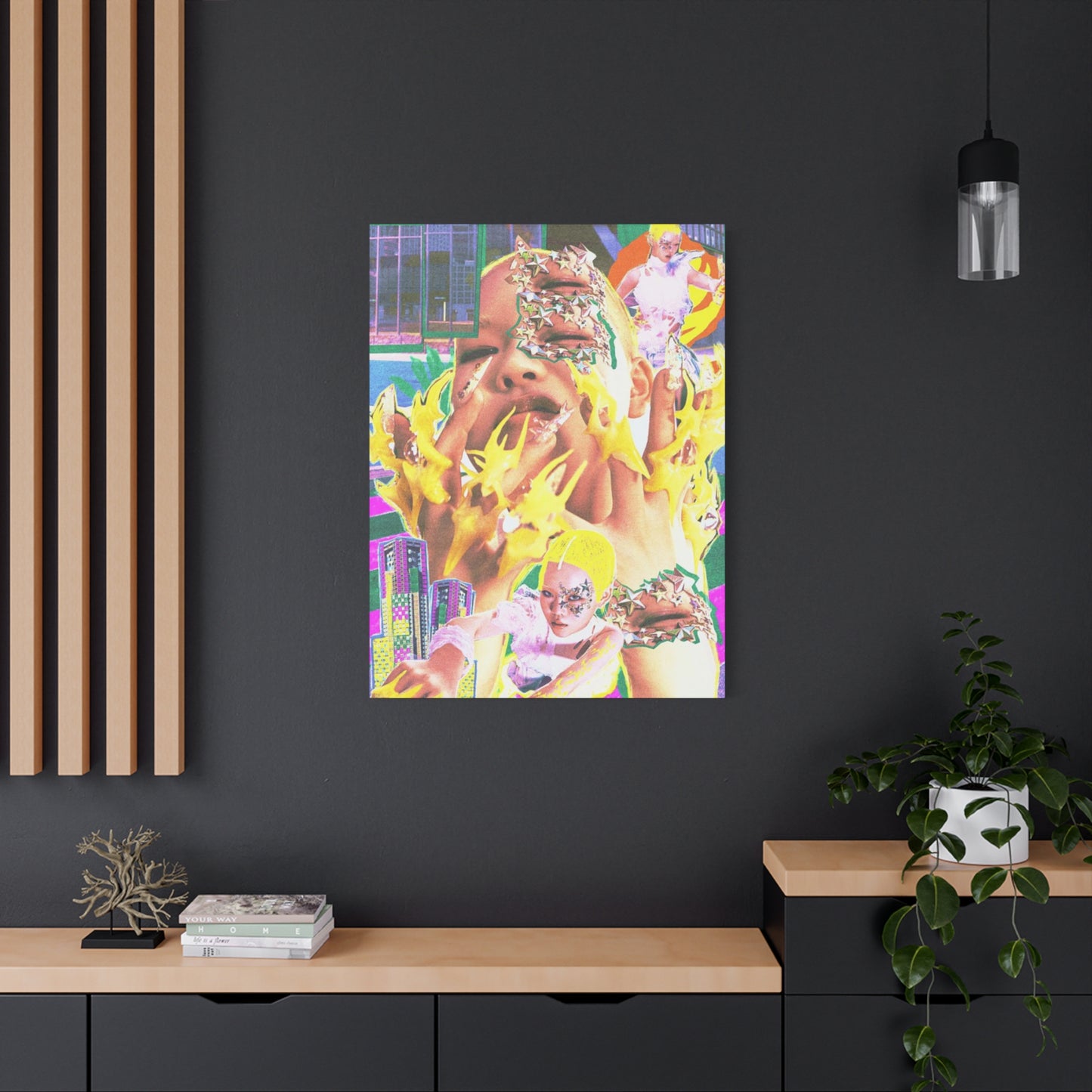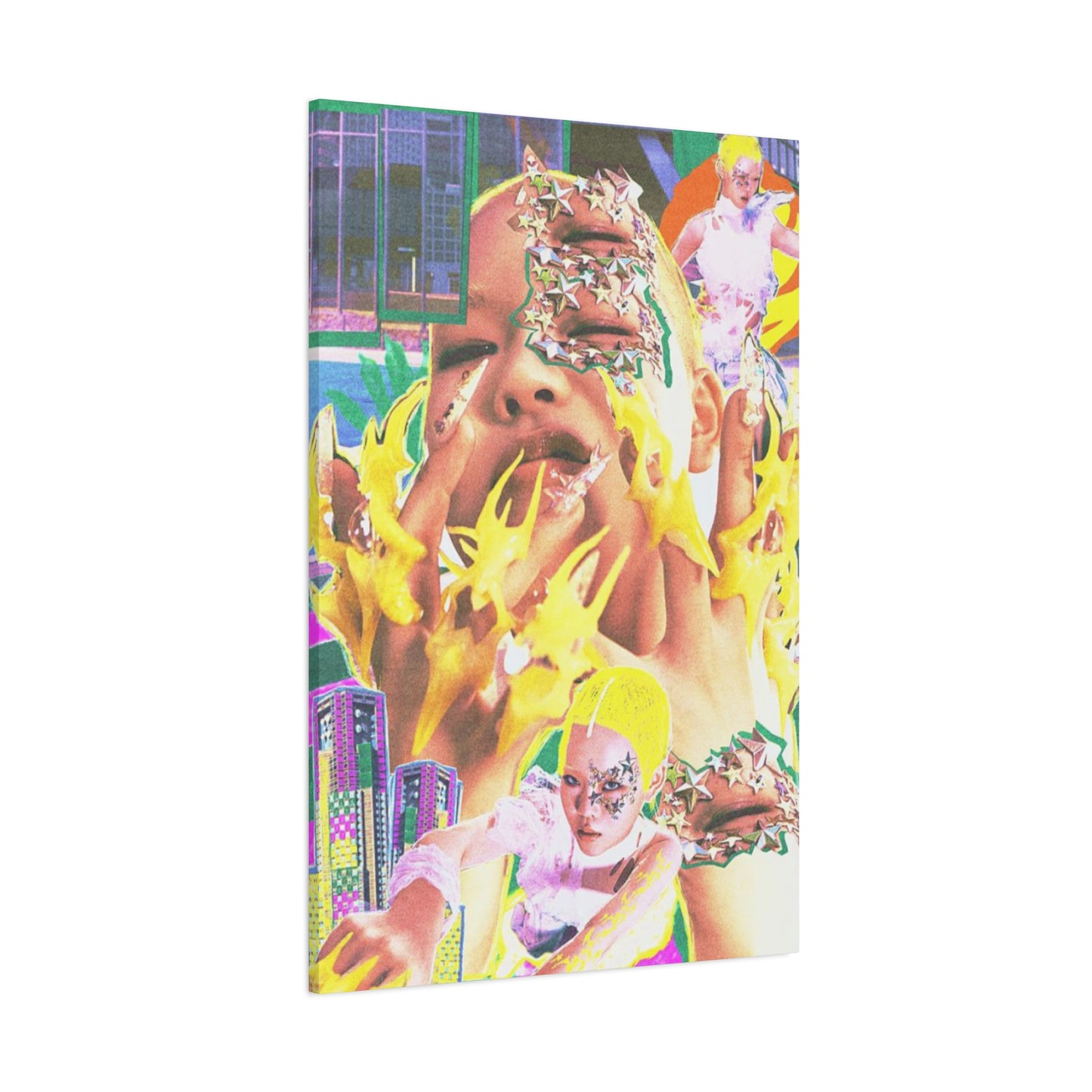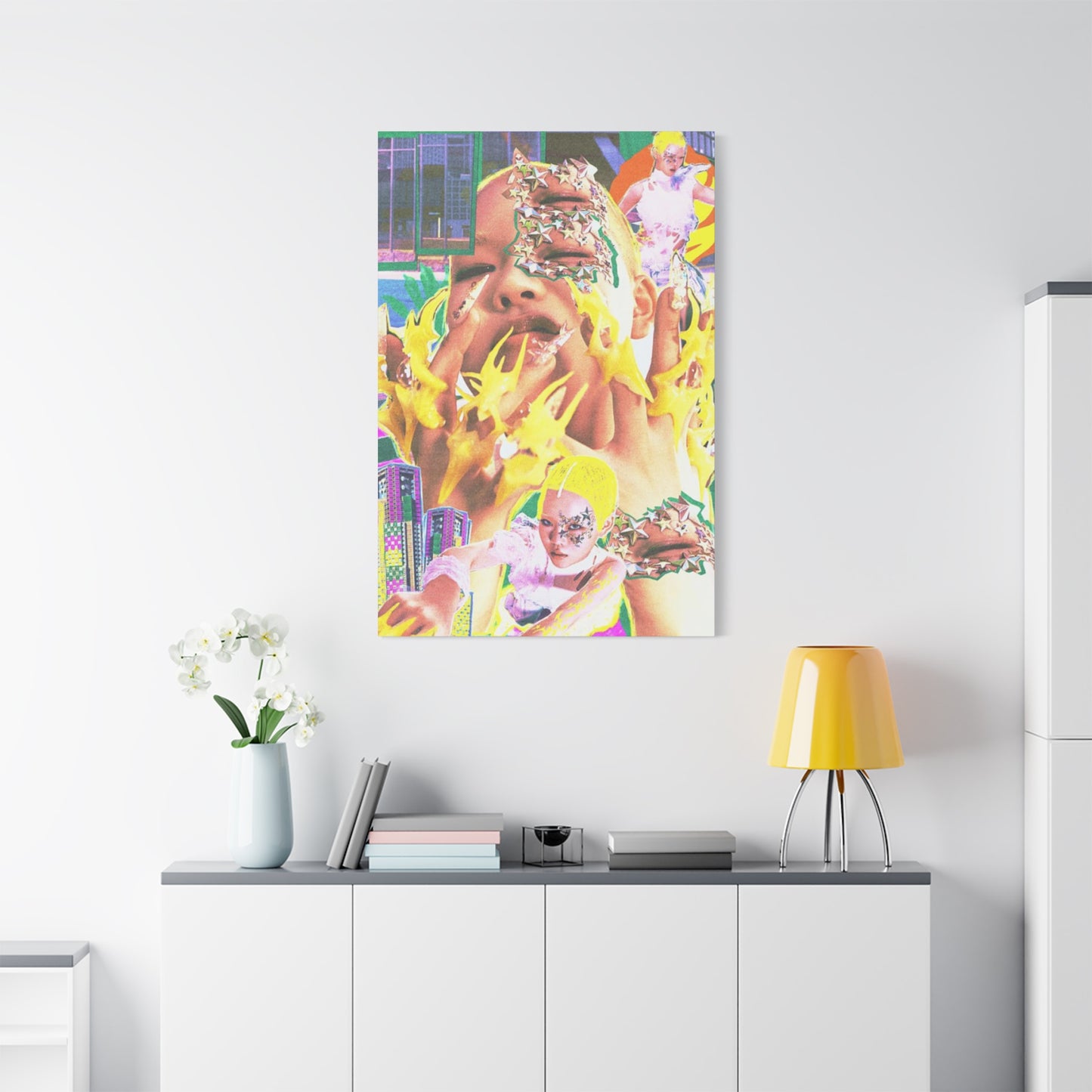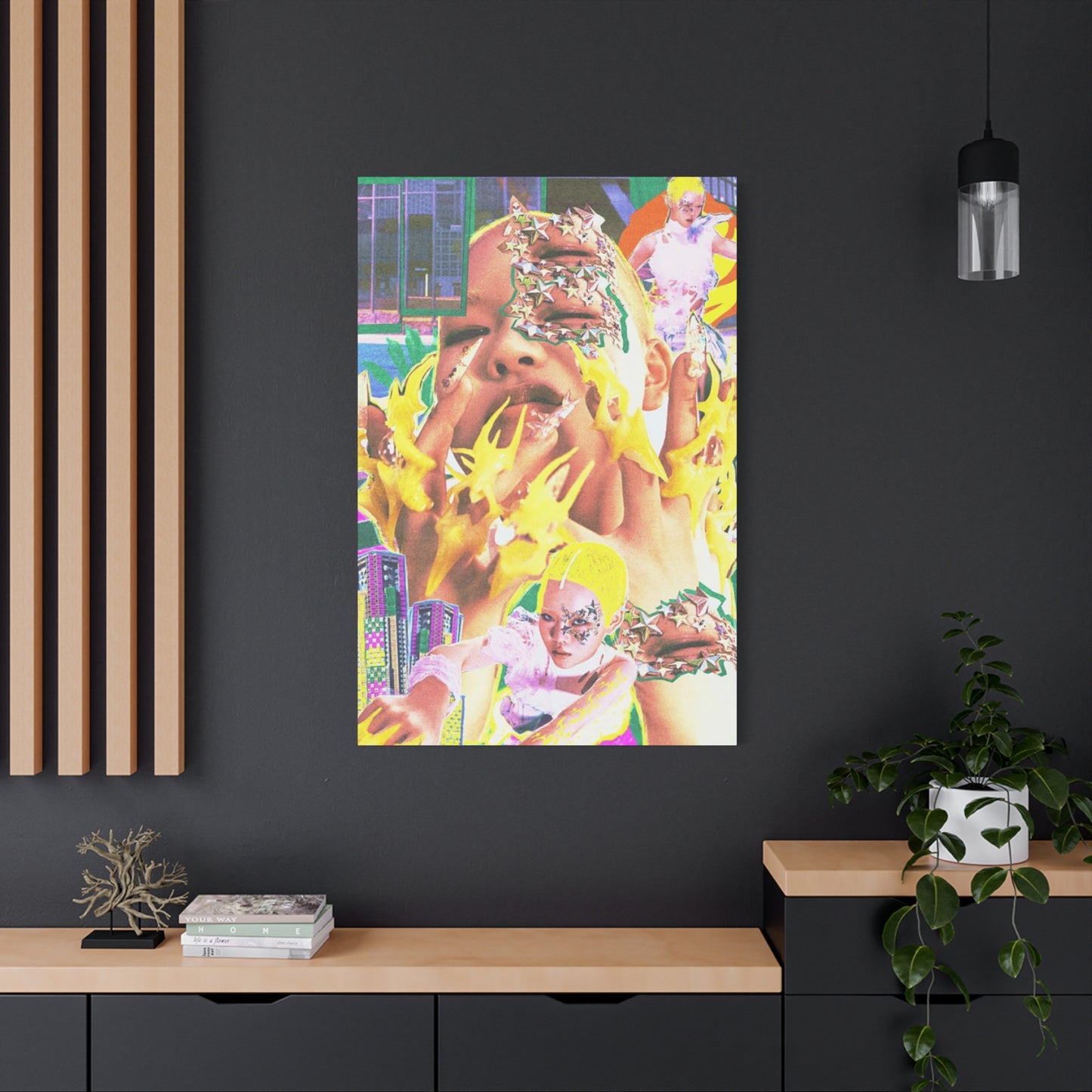Korean Girls Painting Mixed Media Wall Art: Exploring Contemporary Asian Artistic
The world of contemporary Asian artistic expression has witnessed a remarkable surge in Korean girls painting mixed media wall art, creating stunning visual narratives that blend traditional Korean aesthetics with modern artistic techniques. This emerging art movement represents a powerful fusion of cultural heritage and contemporary creativity, where young Korean female artists are pioneering innovative approaches to mixed media compositions that captivate audiences worldwide.
Korean girls painting mixed media wall art encompasses a diverse range of artistic techniques, materials, and cultural influences that reflect the dynamic nature of modern Korean society. These artworks often incorporate traditional Korean elements such as hanbok patterns, cherry blossom motifs, calligraphy, and folk art symbols, seamlessly integrated with contemporary materials like acrylics, digital prints, fabric textures, and three-dimensional elements. The resulting compositions create visually striking pieces that serve as powerful cultural ambassadors, introducing global audiences to the rich artistic traditions of Korea while showcasing the innovative spirit of its young artists.
The popularity of Korean girls painting mixed media wall art has grown exponentially in recent years, driven by the global Korean Wave (Hallyu) phenomenon that has brought Korean culture to international prominence. This artistic movement reflects broader cultural trends, including K-pop, K-dramas, Korean fashion, and Korean beauty standards, all of which influence and inspire these mixed media creations. Artists working in this genre often draw inspiration from popular Korean cultural icons, traditional festivals, historical narratives, and contemporary social themes, creating artworks that resonate with both Korean and international audiences.
Mixed media techniques employed in these artworks often combine traditional painting methods with modern materials and digital elements. Artists might begin with a traditional watercolor or acrylic base, then layer fabric pieces, paper collage elements, metallic accents, or even incorporate LED lighting to create dynamic, multi-dimensional compositions. The use of mixed media allows for incredible versatility in expression, enabling artists to create textures, depths, and visual effects that would be impossible with traditional painting alone.
The subject matter of Korean girls painting mixed media wall art frequently explores themes of identity, femininity, tradition versus modernity, and cultural pride. Many pieces feature portraits of Korean women in traditional dress, contemporary fashion, or fantasy-inspired costumes, often surrounded by symbolic elements that represent different aspects of Korean culture. These artworks serve as powerful statements about Korean identity in the globalized world, celebrating cultural heritage while embracing modern artistic innovation.
Historical Background of Korean Mixed Media Art
The roots of Korean girls painting mixed media wall art can be traced back to traditional Korean artistic practices that have evolved over centuries. Korean art has always been characterized by its emphasis on harmony between human beings and nature, reflected in the use of natural materials, organic forms, and seasonal themes. Traditional Korean painting, known as "minhwa" or folk painting, often featured bright colors, symbolic imagery, and narrative elements that told stories about daily life, spirituality, and cultural values.
During the Joseon Dynasty (1392-1897), Korean art flourished under Confucian ideals that emphasized education, refinement, and cultural development. Women artists, though often working within domestic contexts, made significant contributions to Korean artistic traditions, particularly in the areas of decorative arts, textile design, and domestic paintings. These historical precedents laid the groundwork for contemporary Korean girls painting mixed media wall art, providing a rich foundation of techniques, themes, and cultural references that continue to influence modern artists.
The Japanese occupation of Korea (1910-1945) had a profound impact on Korean artistic development, as traditional practices were suppressed while Western artistic techniques were introduced. This period of cultural tension and adaptation influenced later artistic movements, including the contemporary mixed media art scene. Korean artists learned to blend Eastern and Western techniques, a skill that would prove invaluable in the development of modern mixed media approaches.
The Korean War (1950-1953) and subsequent rapid industrialization and modernization created new cultural contexts that influenced artistic expression. Artists began incorporating industrial materials, urban themes, and international influences into their work, setting the stage for the experimental approaches that characterize contemporary Korean girls painting mixed media wall art. The economic miracle of South Korea in the latter half of the 20th century provided resources and opportunities for artistic education and experimentation, enabling a new generation of artists to explore innovative techniques and materials.
The democratization of South Korea in the 1980s opened up new avenues for artistic expression and cultural exchange. Artists gained greater freedom to explore controversial themes, experiment with new materials, and engage with international art movements. This period saw the emergence of feminist art movements in Korea, which directly influenced the development of Korean girls painting mixed media wall art as a form of cultural and gender expression.
The advent of digital technology and the internet revolution further transformed Korean artistic practices. Young artists gained access to global art communities, international exhibitions, and diverse artistic influences through online platforms. This digital connectivity enabled Korean girls painting mixed media wall art to incorporate digital elements, reach international audiences, and participate in global artistic conversations while maintaining distinctly Korean cultural identities.
Traditional Korean Artistic Elements in Contemporary Mixed Media
Korean girls painting mixed media wall art draws heavily from traditional Korean artistic elements, incorporating them into contemporary compositions that speak to modern audiences while honoring cultural heritage. One of the most prominent traditional elements is the use of "dancheong," the traditional Korean decorative coloring technique that uses five basic colors: red, blue, yellow, white, and black. These colors, each carrying symbolic meaning, appear frequently in mixed media compositions, creating visual connections to Korean architectural traditions, temple decorations, and ceremonial objects.
Hanbok, the traditional Korean dress, serves as both inspiration and literal material in many mixed media artworks. Artists often incorporate actual hanbok fabrics, patterns, and silhouettes into their compositions, creating pieces that celebrate Korean fashion heritage while exploring contemporary themes of identity and femininity. The flowing lines, vibrant colors, and intricate patterns of hanbok provide rich visual elements that translate beautifully into mixed media formats, allowing artists to create layered compositions that reference both historical and contemporary Korean fashion.
Calligraphy, known as "seoye" in Korean, represents another significant traditional element frequently incorporated into mixed media wall art. Korean artists often include traditional Korean scripts, Chinese characters, or modern Korean text as visual and conceptual elements within their compositions. The brushwork techniques, character forms, and poetic content of traditional calligraphy provide both aesthetic beauty and cultural meaning, connecting contemporary artworks to centuries of Korean literary and artistic tradition.
Nature motifs, particularly those associated with the four seasons, appear prominently in Korean girls painting mixed media wall art. Cherry blossoms, pine trees, cranes, and tigers - all significant symbols in Korean traditional art - are reinterpreted through contemporary mixed media techniques. These natural elements often symbolize concepts such as longevity, prosperity, wisdom, and seasonal renewal, carrying forward traditional Korean philosophical concepts about the relationship between humans and nature.
Traditional Korean architectural elements, including roof lines, window patterns, and decorative details from palaces and temples, frequently appear as compositional elements in mixed media artworks. These architectural references connect contemporary art to Korean spatial and design traditions, creating visual links between past and present while exploring themes of cultural continuity and change.
Folk art traditions, particularly "minhwa" or Korean folk paintings, provide rich sources of imagery and symbolism for contemporary mixed media artists. Traditional folk art themes such as flowers and birds, tigers and magpies, and scholarly objects are reinterpreted through modern materials and techniques, creating artworks that maintain cultural authenticity while appealing to contemporary aesthetic sensibilities.
The concept of "jeong," a uniquely Korean emotional concept encompassing affection, compassion, and human connection, often influences the emotional tone and thematic content of mixed media artworks. This traditional Korean value system emphasizes community, family relationships, and emotional bonds, themes that frequently appear in contemporary Korean girls painting mixed media wall art as artists explore personal and cultural identity.
Contemporary Techniques and Materials
Korean girls painting mixed media wall art employs an extensive range of contemporary techniques and materials that push the boundaries of traditional artistic practices. Acrylic paints serve as a primary medium for many artists, providing vibrant colors, quick drying times, and excellent adhesion properties when combined with other materials. Artists often use acrylic paints as base layers, backgrounds, or accent elements, building up complex compositions through multiple applications and layering techniques.
Digital printing technology has revolutionized mixed media art creation, allowing artists to incorporate photographic elements, digital illustrations, and computer-generated designs into their physical artworks. Many Korean artists create digital compositions that are then printed on various materials including canvas, fabric, metal, or specialized art papers, which are subsequently enhanced with traditional painting techniques, collage elements, or three-dimensional additions.
Fabric and textile elements play crucial roles in Korean girls painting mixed media wall art, reflecting Korea's rich textile traditions and contemporary fashion industry. Artists incorporate traditional Korean fabrics, modern synthetic materials, embroidered elements, and textile paints to create rich textural contrasts and cultural references. Silk, cotton, polyester, and specialty fabrics are often layered, sewn, glued, or otherwise integrated into mixed media compositions, creating artworks that engage multiple senses through varied textures and surfaces.
Collage techniques utilizing paper, magazine clippings, traditional Korean papers, and specialty art papers allow artists to create complex narrative compositions that reference contemporary culture, media, and social themes. Korean artists often incorporate Korean text, advertising imagery, pop culture references, and historical documents into their collage work, creating layered meanings that speak to both Korean and international audiences.
Three-dimensional elements including found objects, sculptural additions, and relief techniques add physical depth and tactile interest to mixed media wall art. Artists might incorporate traditional Korean objects, contemporary consumer items, natural materials, or custom-fabricated elements to create artworks that extend beyond the traditional two-dimensional picture plane.
Metallic paints, foils, and metal leaf applications provide visual impact and cultural references to traditional Korean metalwork and jewelry. Gold, silver, and copper elements frequently appear in Korean girls painting mixed media wall art, referencing traditional Korean decorative arts while adding contemporary visual appeal through reflective surfaces and metallic textures.
Lighting elements, including LED strips, fiber optics, and interactive lighting systems, represent cutting-edge additions to mixed media wall art. Some Korean artists incorporate programmable lighting that responds to environmental conditions or viewer interaction, creating dynamic artworks that change appearance throughout the day or in response to audience engagement.
Resin and epoxy applications allow artists to create smooth, glossy surfaces that protect underlying materials while adding visual depth and professional finishing to mixed media compositions. These modern materials enable artists to create artworks that withstand environmental conditions while maintaining vibrant colors and sharp details over extended periods.
Cultural Significance and Symbolism
Korean girls painting mixed media wall art carries profound cultural significance that extends far beyond aesthetic appeal, serving as a powerful medium for cultural expression, identity exploration, and social commentary. These artworks function as cultural ambassadors, introducing international audiences to Korean values, traditions, and contemporary social issues while providing Korean viewers with opportunities to reflect on their cultural identity in an increasingly globalized world.
The symbolism embedded within these mixed media compositions draws from thousands of years of Korean cultural development, incorporating traditional Korean philosophical concepts, religious beliefs, and social values. The concept of "han," often described as a uniquely Korean emotional state encompassing sorrow, regret, and acceptance, frequently influences the emotional tone and thematic content of these artworks. Artists explore personal and collective experiences of loss, separation, and healing through visual metaphors and symbolic imagery that resonate with Korean cultural understanding.
Color symbolism plays a crucial role in Korean girls painting mixed media wall art, with traditional Korean color meanings informing contemporary artistic choices. Red represents passion, celebration, and good fortune; blue symbolizes peace, stability, and infinity; yellow signifies prosperity, wisdom, and enlightenment; white represents purity, simplicity, and spiritual transcendence; and black denotes dignity, sophistication, and the infinite. Artists skillfully combine these traditional color meanings with contemporary color theory to create compositions that communicate on multiple cultural levels.
Animal symbolism, deeply rooted in Korean folklore and traditional beliefs, appears frequently in mixed media artworks. Cranes represent longevity and good fortune; tigers symbolize courage and protection; rabbits signify fertility and abundance; and butterflies represent transformation and renewal. Contemporary artists reinterpret these traditional animal symbols through modern artistic techniques, creating artworks that maintain cultural authenticity while appealing to contemporary aesthetic sensibilities.
Plant and flower symbolism provides another rich source of cultural meaning in Korean mixed media art. Cherry blossoms represent the ephemeral nature of life and beauty; pine trees symbolize endurance and eternal life; bamboo represents flexibility and resilience; and peonies signify honor, wealth, and nobility. Artists incorporate these botanical elements both literally and metaphorically, using actual plant materials, painted representations, or abstract interpretations to convey cultural meanings.
The representation of Korean women in these artworks often explores complex themes of gender roles, social expectations, and personal empowerment within Korean society. Traditional Korean concepts of feminine beauty, including pale skin, small features, and graceful deportment, are often juxtaposed with contemporary expressions of female empowerment, independence, and individual creativity. These artistic explorations reflect broader social changes occurring within Korean society as gender roles continue to evolve.
Family relationships and social connections, fundamental aspects of Korean culture, frequently appear as central themes in mixed media artworks. The Korean concept of "jeong," emphasizing emotional bonds and mutual support, influences artistic representations of interpersonal relationships, community connections, and social responsibilities. Artists explore both traditional family structures and contemporary relationship dynamics through visual narratives that resonate with Korean cultural values.
Regional Variations and Artistic Movements
Korean girls painting mixed media wall art exhibits fascinating regional variations that reflect the diverse cultural landscapes and artistic communities throughout South Korea. Seoul, as the cultural and economic capital, serves as the primary hub for contemporary mixed media art, attracting artists from throughout Korea and fostering innovative artistic movements that combine traditional Korean elements with international influences. The city's numerous galleries, art schools, and cultural institutions provide platforms for emerging artists to develop and showcase their mixed media works.
Busan, Korea's second-largest city and primary port, has developed its own distinct artistic identity influenced by maritime culture, international trade connections, and coastal geography. Artists in Busan often incorporate oceanic themes, maritime imagery, and international cultural elements into their mixed media compositions, creating artworks that reflect the city's role as a gateway between Korea and the wider world. The Busan Biennale and other cultural events have helped establish the city as a significant center for contemporary Korean art.
Jeju Island's unique cultural heritage and natural beauty have inspired a distinctive approach to mixed media art that emphasizes environmental themes, traditional island culture, and spiritual connections to nature. Artists working on Jeju often incorporate volcanic rock, local plants, traditional island materials, and references to local folklore into their mixed media compositions, creating artworks that celebrate the island's distinct cultural identity.
The Gyeonggi Province, surrounding Seoul, has become home to numerous artist residencies, studios, and alternative art venues that foster experimental approaches to mixed media art. Artists in this region often explore themes of urbanization, cultural change, and the tension between traditional rural life and modern metropolitan development. The proximity to Seoul provides access to urban cultural resources while maintaining connections to Korea's agricultural and traditional heritage.
Academic institutions throughout Korea have played crucial roles in developing regional artistic movements and training new generations of mixed media artists. Universities in Daegu, Gwangju, and other major cities have established distinctive programs and artistic philosophies that influence regional artistic development. These educational institutions often emphasize particular approaches to mixed media art, creating regional artistic styles and movements that contribute to the overall diversity of Korean contemporary art.
The Gwangju Biennale and other regional art festivals have helped establish local artistic movements and provide platforms for Korean girls painting mixed media wall art to gain national and international recognition. These events often emphasize particular themes or artistic approaches that reflect regional cultural characteristics while contributing to broader conversations about Korean contemporary art.
Folk art traditions vary significantly across different regions of Korea, providing diverse sources of inspiration for contemporary mixed media artists. Northern regions' influences from Mongolian and Chinese cultures; eastern coastal areas' connections to Japanese cultural exchange; and southern regions' distinct dialects, foods, and customs all contribute to regional variations in mixed media artistic expression.
Industrial heritage and economic development patterns have also influenced regional artistic movements. Areas with strong textile manufacturing traditions often see mixed media artists incorporating fabric and fiber arts techniques; regions with technology industries frequently feature digital elements and high-tech materials in artistic compositions; and areas with traditional crafts heritage often emphasize handmade elements and traditional material techniques.
Notable Artists and Their Contributions
The contemporary Korean mixed media art scene features numerous talented artists whose innovative approaches to Korean girls painting mixed media wall art have gained national and international recognition. These artists have pioneered techniques, explored cultural themes, and created artworks that define and advance the medium while contributing to broader conversations about Korean culture and contemporary art.
Lee Hyun-jung represents one of the most influential contemporary Korean mixed media artists, known for her sophisticated combinations of traditional Korean painting techniques with digital elements and contemporary materials. Her artworks often feature portraits of Korean women in traditional and contemporary settings, exploring themes of cultural identity, generational change, and feminine empowerment. Lee's innovative use of LED lighting integrated with traditional painting elements has created a signature style that has influenced numerous younger artists.
Kim So-young has gained recognition for her experimental approaches to textile integration in mixed media compositions. Her artworks incorporate traditional Korean fabrics, contemporary fashion elements, and hand-painted details to create complex narratives about Korean fashion culture, consumer society, and personal identity. Kim's background in fashion design brings unique perspectives to mixed media art, creating pieces that function as both artistic statements and commentary on Korean style culture.
Park Min-kyung specializes in mixed media artworks that incorporate traditional Korean calligraphy with contemporary visual elements. Her compositions often feature Korean poetry, traditional sayings, or contemporary text integrated with painted backgrounds, collage elements, and three-dimensional additions. Park's work has been particularly influential in demonstrating how traditional Korean literary culture can be integrated with contemporary artistic techniques to create meaningful cultural expressions.
Choi Eun-hye focuses on environmental themes in her mixed media artworks, incorporating natural materials from Korean landscapes with painted elements and digital imagery. Her compositions often address issues of environmental protection, urbanization impacts, and the relationship between traditional Korean culture and contemporary environmental challenges. Choi's work has gained attention for its innovative use of sustainable materials and eco-friendly artistic techniques.
Jung Soo-jin has pioneered the integration of Korean traditional music elements into mixed media wall art through the incorporation of sound elements, musical instrument materials, and visual representations of Korean musical traditions. Her artworks create multi-sensory experiences that engage viewers through both visual and auditory elements, creating innovative approaches to cultural expression through mixed media art.
Han Young-mi specializes in mixed media artworks that explore Korean family relationships, social structures, and intergenerational cultural transmission. Her compositions often feature multiple generations of Korean women, traditional and contemporary domestic settings, and symbolic elements that represent family connections and cultural continuity. Han's work has been particularly influential in addressing demographic changes and family structure evolution in contemporary Korean society.
Yoon Ji-hye focuses on mixed media artworks that address Korean youth culture, social media influence, and contemporary communication methods. Her compositions often incorporate elements from Korean pop culture, social media imagery, and digital communication methods, creating artworks that speak directly to younger Korean audiences while addressing broader themes of cultural change and technological influence.
International recognition of these artists has helped establish Korean girls painting mixed media wall art as a significant contemporary art movement. Their participation in international exhibitions, art fairs, and cultural exchange programs has introduced global audiences to Korean mixed media techniques while inspiring continued innovation within Korean artistic communities.
Materials and Supply Sources
Korean girls painting mixed media wall art requires diverse materials and supplies that support both traditional Korean artistic techniques and contemporary experimental approaches. Artists working in this medium must source traditional Korean materials, contemporary art supplies, and specialized items that enable innovative artistic expression while maintaining cultural authenticity and professional quality standards.
Traditional Korean art materials remain essential components of contemporary mixed media artworks. Korean traditional papers, including hanji (Korean handmade paper), provide distinctive textures, colors, and cultural authenticity that enhance mixed media compositions. Hanji is available in various thicknesses, colors, and surface treatments, enabling artists to incorporate traditional Korean paper-making traditions into contemporary artistic expressions. Specialized suppliers in Seoul's traditional craft districts continue to produce high-quality hanji using traditional methods passed down through generations.
Korean traditional pigments and painting materials, including natural mineral pigments, organic colorants, and traditional binding agents, provide authentic color palettes and surface qualities that reference historical Korean painting traditions. These materials require specialized knowledge and techniques for proper preparation and application, connecting contemporary artists to centuries of Korean artistic practice while enabling unique visual effects unavailable through modern synthetic materials.
Traditional Korean fabrics and textile materials, including silk varieties, cotton types, and specialty weaves used in hanbok construction, provide authentic cultural elements for mixed media compositions. Textile suppliers in traditional markets and specialized fabric districts offer extensive selections of traditional and contemporary Korean fabrics, enabling artists to incorporate genuine cultural materials into their artworks.
Contemporary art supplies including acrylic paints, professional-grade canvases, synthetic brushes, and modern adhesives provide technical performance and durability necessary for mixed media artworks intended for long-term display and preservation. Korean and international art supply retailers offer extensive selections of contemporary materials, often providing specialized products designed specifically for mixed media applications.
Digital printing services and materials have become crucial resources for Korean mixed media artists incorporating photographic elements, digital illustrations, and computer-generated designs into their physical artworks. Specialized printing companies offer services including canvas printing, fabric printing, metal printing, and specialized substrate printing that enable artists to create hybrid digital-physical compositions.
Specialized adhesives, mounting materials, and conservation supplies ensure that mixed media artworks maintain structural integrity and visual quality over extended periods. Professional art supply companies provide archival-quality materials that meet museum standards for artwork preservation, enabling artists to create works suitable for serious collecting and institutional display.
Three-dimensional materials including foam boards, sculptural materials, found objects, and custom fabrication supplies enable artists to create mixed media works that extend beyond traditional two-dimensional formats. Craft supply stores, industrial suppliers, and specialty art retailers provide diverse material options for artists exploring sculptural elements in their mixed media compositions.
Lighting elements and electronic components, including LED strips, control systems, and interactive technologies, represent cutting-edge additions to mixed media wall art. Electronics suppliers and specialized art technology companies provide materials and technical support for artists incorporating dynamic lighting and interactive elements into their artworks.
Online marketplaces and international suppliers have expanded access to specialized materials, enabling Korean artists to source unique items, traditional materials from other cultures, and innovative products that support experimental artistic approaches. These resources have democratized access to diverse materials while enabling greater artistic innovation and cross-cultural artistic exchange.
Cultural Exchange and International Influence
Korean girls painting mixed media wall art has emerged as a powerful vehicle for cultural exchange, facilitating meaningful dialogue between Korean artistic traditions and international contemporary art movements. This artistic medium serves as a cultural bridge, introducing global audiences to Korean aesthetic principles, philosophical concepts, and social themes while incorporating international influences that reflect Korea's increasingly connected position in the global community.
The Korean Wave (Hallyu) phenomenon has significantly amplified international interest in Korean girls painting mixed media wall art, with global audiences seeking authentic Korean cultural experiences through various artistic mediums. This cultural movement has created unprecedented opportunities for Korean mixed media artists to share their work with international audiences through online platforms, international exhibitions, and cultural exchange programs that celebrate Korean creativity and innovation.
International art fairs and exhibitions have provided crucial platforms for Korean mixed media artists to showcase their work to global audiences while learning from international artistic movements and techniques. Events such as Art Basel, Frieze, and regional art fairs throughout Asia, Europe, and the Americas have featured Korean girls painting mixed media wall art, introducing international collectors, curators, and art enthusiasts to this distinctive Korean artistic movement.
Artist residency programs and cultural exchange initiatives have facilitated meaningful cross-cultural dialogue and artistic collaboration. Korean artists participating in international residencies often incorporate local materials, cultural references, and artistic techniques into their mixed media works, creating unique hybrid compositions that reflect multiple cultural influences while maintaining distinctly Korean artistic identities. Similarly, international artists visiting Korea often collaborate with local artists, contributing diverse perspectives and techniques to the Korean mixed media art scene.
Educational partnerships between Korean art institutions and international universities have created opportunities for students and faculty to engage in cross-cultural artistic exploration. These collaborations often result in joint exhibitions, collaborative artworks, and innovative approaches to mixed media art that incorporate multiple cultural perspectives and artistic traditions. Student exchange programs provide young artists with exposure to diverse artistic practices and cultural contexts that inform their artistic development.
Digital platforms and social media have revolutionized international access to Korean girls painting mixed media wall art, enabling artists to share their work with global audiences instantaneously while engaging in real-time dialogue with international artistic communities. Online galleries, virtual exhibitions, and digital art platforms have democratized access to Korean mixed media art while providing artists with valuable feedback and market opportunities from international sources.
Cultural diplomacy initiatives supported by the Korean government have promoted Korean mixed media art as a form of soft power, using artistic expression to build positive international relationships and enhance Korea's cultural reputation globally. These programs often sponsor international exhibitions, artist exchanges, and cultural events that showcase Korean artistic innovation while fostering mutual understanding and appreciation between Korea and other nations.
International collecting and market development have created economic opportunities for Korean mixed media artists while increasing global awareness of this distinctive art form. International collectors, museums, and cultural institutions have begun acquiring Korean girls painting mixed media wall art, recognizing its artistic merit and cultural significance. This market development has provided artists with sustainable career opportunities while encouraging continued innovation and artistic excellence.
The influence of international artistic movements on Korean mixed media art has contributed to its continued evolution and innovation. Korean artists skillfully incorporate elements from international art movements including street art, digital art, environmental art, and feminist art while maintaining distinctly Korean cultural identities and artistic approaches. This synthesis creates unique artistic expressions that speak to both Korean and international audiences.
Digital Integration and Technology
The integration of digital technology and contemporary technological innovations has revolutionized Korean girls painting mixed media wall art, enabling artists to create sophisticated compositions that seamlessly blend traditional Korean artistic elements with cutting-edge digital techniques and interactive technologies. This technological integration reflects Korea's position as a global technology leader while demonstrating how traditional cultural practices can evolve through technological innovation.
Digital imaging and photo manipulation software have become essential tools for many Korean mixed media artists, enabling them to create complex digital compositions that serve as foundations for physical artworks or integrated elements within mixed media pieces. Artists use professional software to combine photographic elements, create digital illustrations, manipulate traditional artwork images, and design compositional layouts that guide the creation of physical mixed media pieces.
3D printing technology has opened new possibilities for incorporating three-dimensional elements into mixed media wall art, allowing artists to create custom sculptural components, decorative elements, and functional fixtures that enhance their compositions. Korean artists have pioneered innovative uses of 3D printing materials and techniques, creating unique textures, forms, and interactive elements that would be impossible to achieve through traditional crafting methods.
Augmented reality (AR) applications have begun appearing in Korean mixed media artworks, creating interactive experiences that engage viewers through smartphone or tablet interfaces. These AR integrations often provide additional layers of information, alternative visual perspectives, or animated elements that enhance the viewing experience while demonstrating innovative approaches to audience engagement and artistic storytelling.
LED lighting systems and programmable lighting controllers enable artists to create dynamic artworks that change appearance throughout the day, respond to environmental conditions, or interact with viewer presence. Korean artists have developed sophisticated lighting integrations that reference traditional Korean concepts of seasonal change, daily rhythms, and spiritual illumination while utilizing contemporary lighting technology to create visually stunning effects.
Digital projection mapping techniques allow artists to transform static mixed media artworks into dynamic, changeable displays that can adapt to different exhibition contexts, audience interactions, or temporal conditions. These projection systems enable single artworks to present multiple visual states, tell evolving stories, or respond to real-time data inputs in ways that traditional static artworks cannot achieve.
Sound integration through digital audio systems has enabled Korean mixed media artists to create multi-sensory experiences that incorporate traditional Korean music, contemporary soundscapes, and interactive audio elements that respond to viewer behavior or environmental conditions. These audio integrations often reference traditional Korean musical instruments, folk songs, or contemporary Korean popular music while enhancing the emotional impact and cultural resonance of visual compositions.
Sensor technologies including motion detectors, touch sensors, and environmental monitoring devices have enabled the creation of truly interactive mixed media artworks that respond to audience engagement in real-time. Korean artists have developed innovative sensor applications that trigger lighting changes, audio responses, or visual transformations based on viewer proximity, touch, or behavior patterns.
Digital documentation and archiving technologies have improved the preservation and sharing of Korean girls painting mixed media wall art, enabling high-resolution documentation of complex artworks that incorporate multiple materials, textures, and dimensional elements. These documentation techniques support scholarly research, insurance documentation, and reproduction for exhibition or commercial purposes.
Online presentation platforms and virtual gallery systems have expanded access to Korean mixed media art, enabling artists to reach global audiences through virtual exhibitions, online sales platforms, and digital art presentations that capture the complexity and beauty of mixed media artworks through high-quality digital reproduction and interactive viewing interfaces.
Therapeutic and Social Benefits
Korean girls painting mixed media wall art provides significant therapeutic and social benefits that extend far beyond aesthetic appreciation, offering valuable opportunities for personal expression, cultural connection, community building, and mental health support. The creation and appreciation of these artworks contribute to individual wellbeing while fostering social cohesion and cultural understanding within Korean communities and beyond.
The creative process involved in producing mixed media art provides substantial mental health benefits through stress reduction, mindfulness practice, and creative self-expression. The meditative qualities of painting, combined with the tactile engagement required for mixed media techniques, create therapeutic experiences that support emotional regulation, anxiety reduction, and overall psychological wellbeing. Many Korean artists report that the process of creating mixed media artworks provides essential outlets for processing complex emotions, cultural identity questions, and social pressures.
Art therapy programs throughout Korea have begun incorporating mixed media techniques into treatment protocols for various mental health conditions, recognizing the particular effectiveness of mixed media approaches for individuals who benefit from multiple sensory engagement and diverse expressive options. The combination of visual, tactile, and cultural elements in Korean girls painting mixed media wall art provides rich therapeutic resources for addressing trauma, depression, anxiety, and other mental health challenges.
Cultural identity exploration through mixed media art creation provides particularly valuable benefits for Korean immigrants, diaspora communities, and individuals navigating questions of cultural belonging and identity. The process of incorporating traditional Korean elements into contemporary artistic expressions enables individuals to maintain cultural connections while adapting to changing social contexts, supporting healthy identity development and cultural pride.
Community art programs and collaborative mixed media projects have demonstrated significant social benefits through their ability to bring together individuals from diverse backgrounds around shared creative goals. These programs often address social isolation, intergenerational disconnection, and community fragmentation while building social capital and fostering mutual understanding between different demographic groups within Korean communities.
Educational benefits of mixed media art creation include enhanced critical thinking skills, cultural knowledge development, historical understanding, and creative problem-solving abilities. Students engaging with Korean girls painting mixed media wall art develop appreciation for traditional Korean culture while building contemporary artistic skills that prepare them for careers in creative industries or enhance their overall educational experience.
Cross-cultural understanding and international relationship building represent additional social benefits of Korean mixed media art. These artworks serve as conversation starters and cultural bridges, enabling meaningful dialogue between Korean and non-Korean individuals about cultural traditions, contemporary social issues, and shared human experiences through artistic expression.
Economic benefits within Korean communities include support for local artists, cultural tourism development, and creative industry growth. The popularity of Korean girls painting mixed media wall art has created market opportunities for artists, gallery owners, art suppliers, and related service providers while contributing to Korea's cultural economy and international cultural reputation.
Intergenerational connection and cultural transmission benefits emerge as older Korean community members share traditional cultural knowledge with younger artists, while younger artists introduce older generations to contemporary artistic techniques and global cultural perspectives. This bidirectional cultural exchange strengthens family and community relationships while ensuring cultural continuity.
Social media and digital sharing of Korean mixed media artworks create virtual communities and support networks that connect artists and art enthusiasts across geographic boundaries, reducing isolation and providing platforms for artistic development, cultural celebration, and mutual support among individuals passionate about Korean culture and contemporary art.
Conservation and Preservation Techniques
The conservation and preservation of Korean girls painting mixed media wall art presents unique challenges that require specialized knowledge, techniques, and materials to ensure the longevity and integrity of these complex artistic compositions. The combination of traditional Korean materials with contemporary elements creates preservation requirements that draw from both traditional Korean art conservation practices and modern museum conservation standards.
Material compatibility assessment represents a crucial first step in mixed media artwork conservation, as the diverse materials commonly used in these compositions may interact in ways that affect long-term stability. Conservation professionals must understand how traditional Korean papers, pigments, and fabrics interact with contemporary materials including acrylic paints, synthetic adhesives, digital prints, and electronic components to develop appropriate preservation strategies.
Environmental control systems for displaying and storing mixed media artworks must account for the diverse environmental requirements of different materials within single compositions. Traditional Korean materials often require specific humidity levels, temperature ranges, and light exposure limits that may differ from requirements for contemporary materials, necessitating compromise solutions that provide adequate protection for all components.
Documentation and condition assessment protocols for mixed media artworks require comprehensive approaches that record the physical condition, material composition, and structural integrity of complex multi-material compositions. Digital documentation techniques including high-resolution photography, 3D scanning, and spectral analysis provide detailed records that support conservation decision-making and treatment planning.
Conclusion:
Korean girls painting mixed media wall art represents a vibrant and evolving facet of contemporary Asian artistic expression, bridging tradition with modernity in visually captivating ways. This art form captures not only the aesthetic beauty of Korean culture but also the nuanced stories, emotions, and identities of young women navigating a rapidly changing world. By combining various media—such as paint, collage, digital elements, and texture—artists create layered compositions that evoke depth and complexity, reflecting both personal and cultural narratives.
The mixed media approach allows for greater experimentation and freedom, enabling artists to push boundaries beyond conventional painting. This fusion of materials and techniques mirrors the dynamic nature of contemporary Korean society, where heritage and innovation coexist. The depiction of Korean girls in this context often challenges stereotypes and celebrates individuality, empowerment, and the evolving roles of women within and beyond Korea.
Moreover, these artworks serve as a cultural bridge, introducing global audiences to Korea’s rich artistic heritage while engaging with universal themes of identity, youth, and transformation. The contemporary style appeals to a diverse audience, making Korean girls painting mixed media wall art a powerful vehicle for cross-cultural dialogue and appreciation. Through bold colors, intricate textures, and compelling compositions, these pieces invite viewers to explore deeper meanings and foster emotional connections.
In essence, Korean girls painting mixed media wall art is more than decorative—it’s a reflection of contemporary Asian artistry that embraces innovation while honoring tradition. It offers insight into the cultural shifts and individual experiences shaping Korea today, expressed through a fresh and experimental artistic lens. As this genre continues to grow and gain recognition, it not only enriches the global art scene but also empowers artists to tell stories that resonate across boundaries.
Ultimately, these artworks stand as a testament to the creativity, resilience, and spirit of contemporary Korean women and the vibrant cultural landscape they inhabit, making them a meaningful addition to any collection of modern Asian art.

















